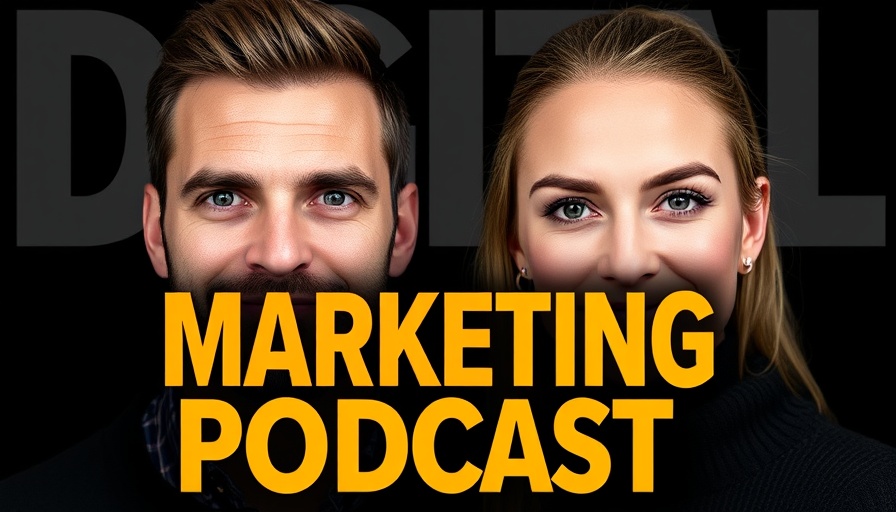
Understanding the Landscape of Paid Media
In the fast-paced world of marketing, particularly for small and medium-sized businesses, understanding how to effectively leverage paid media can be the difference between thriving and surviving. Paid media encompasses any marketing that involves payment to show across platforms, making it an essential tool for brands looking to amplify their reach. For SMB owners and marketing managers, the challenge lies in staying updated with the latest trends and strategies.
In "PAID MEDIA MONTHLY - A Brand New Series by Exposure Ninja", the discussion dives into the significance of effective marketing strategies for SMBs, sparking deeper analysis on leveraging local SEO tools and paid media.
Unpacking Local SEO Tips for SMBs
When it comes to local businesses, local SEO tips should be a cornerstone of your marketing strategy. This involves optimizing your online presence to attract more customers from relevant local searches. For instance, ensuring your business appears in local directories can significantly enhance your visibility. Additionally, taking charge of your Google My Business profile presents a FREE opportunity to showcase your offerings and updates directly to your community.
Why Google My Business Matters
Google My Business optimization enables SMBs to manage how their business appears on Google Search and Maps. When prospective customers search for services you offer, a well-optimized profile helps ensure that they find you. Have you taken the time to verify your address, update business hours, and add enticing photos? These elements not only attract customers but also signal to Google that you are a trustworthy local business, helping improve your local search ranking factors.
Social Media Marketing Strategies That Work
In today’s social-media-driven world, incorporating effective social media marketing strategies is vital. Platforms like Facebook, Instagram, and TikTok aren’t just for selfies and cat videos—they’re powerful tools that can widen your customer reach. From using Instagram growth tips to creating engaging content that resonates with your audience, a well-thought-out social media strategy can drive traffic to your store.
Comparison of Paid Advertising Across Platforms
Interestingly, while paid media offers immediate visibility, it's essential to choose the right platform for your objectives. For instance, Facebook advertising for small businesses can help target local customers effectively, while LinkedIn marketing can elevate your B2B relationships. On platforms like TikTok, unique and creative content can spark interest among younger demographics—if your product or service fits that audience.
Building Customer Loyalty Through Content
Another powerful aspect of marketing is building customer loyalty. Engaging customers through informed content marketing strategies not only keeps them coming back but also promotes word-of-mouth recommendations. This is where blogging tips for businesses can come into play — sharing quality articles related to your industry can position your brand as an authority and create a sense of trust with your customer base.
How to Engage with Customers Effectively
Understanding your customers is crucial in improving the business experience. Using customer engagement tips allows you to connect with your customers meaningfully. This can include regular feedback surveys or implementing customer retention strategies to keep your existing clients happy. Changes guided by customer feedback can make your service or product offerings more aligned with what your audience truly wants.
Success Stories: Learning from Others
In exploring the world of local business success stories, it’s fascinating to see how similar strategies have propelled businesses forward. Notable case studies reveal that by leveraging SEO tools and effective social media campaigns, businesses saw marked improvements in customer engagement and visibility. Analyzing these real-life SEO case studies can provide insights and motivation for your own marketing journey.
Final Thoughts: Embrace The Power of Paid Media
The video, "PAID MEDIA MONTHLY - A Brand New Series by Exposure Ninja," delved deep into the evolving landscape of paid media. The key takeaways remind us that understanding local SEO, optimizing social media strategies, and learning from success stories can critically enhance our marketing endeavors. By utilizing these insights, you can skillfully navigate the marketing maze and position your business for growth.
To truly harness the power of these strategies, analyzing detailed
marketing case studies for SMBs is vital. Discover actionable insights that can take your marketing efforts to the next level. Don't just consume content—implement strategies that transform your visibility and customer connection today!
 Add Row
Add Row  Add
Add 




Write A Comment